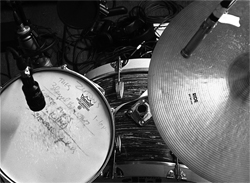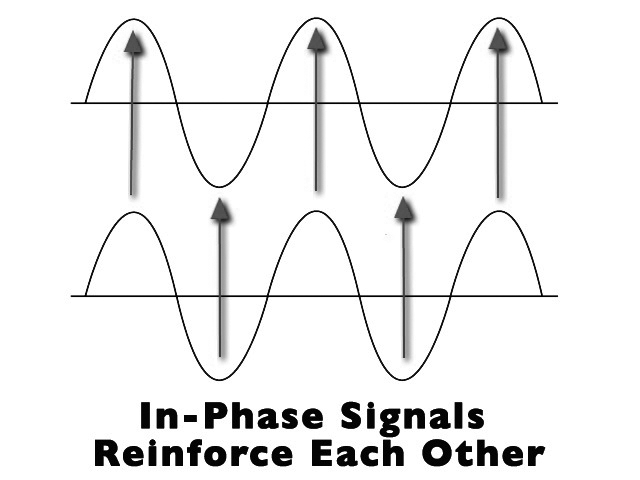This article is excerpted from Bobby Owsinki’s “The Drum Recording Handbook.”
One of the most important and overlooked aspects of drum mic’ing is making sure that the mics are all in-phase.
This is really important because with only one out-of-phase mic, the whole kit will never sound right, and if not corrected before all the drums are mixed together, it can never be fixed.
So just what is phase anyway? Without getting into a heavy explanation, it just means that all the microphones are pushing and pulling together.
If one mic is pushing while another is pulling, they cancel each other out. Check out the diagram of Figure 1.
In this figure, both mics are pushing and pulling together. Their signal peaks happen at the same time as does their valleys.
As a result, their signals reinforce one another. In Figure 2, when mic 1’s signal peaks, mic 2’s signal valleys. They cancel each other out and result in a very weak sounding signal when mixed together.
Acoustic Phase Cancellation
There are two types of phasing problems that can happen—electronic and acoustic.
An acoustic phasing problem occurs when two mics are too close together and pick up the same signal at the same time, only one is picking it up a little later than the first because it’s a little farther away.
With acoustic phase problems, the sounds won’t cancel each other out completely, only at certain frequencies. This usually makes the mix of the two together sound either hollow or just lacking depth and bottom end.
The way to eliminate the problem is by moving mic 2 a little further away from mic 1, or if the mics are directional, make sure that each one is pointing directly at the source that they’re trying to capture.
Keeping the mics parallel to each other, or at a 90-degree angle for mics underneath drums will also really make a difference.
Electronic Phase Cancellation
Why would there be an electronic phase problem? Almost all of the time it’s because a mic cable is mis-wired; it was either repaired incorrectly or originally wired incorrectly from the factory (which is rare).
There are two ways to check the electronic phase.





















